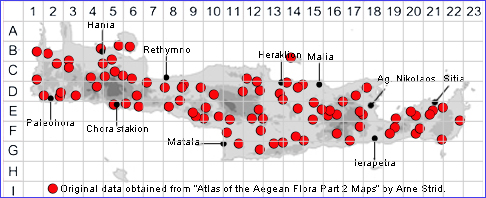
SPECIES DESCRIPTION
EUPHORBIA CHARACIAS
Family and Genus:- See- EUPHORBIACEAE/Sect. ESULA
Common Names:- Large Mediterranean spurge
Homotypic Synonyms:- Esula characias, Tithymalus characias,
Meaning:- Euphorbia (L) For Euphorbus, physician to the King of Mauritania.
Characias (L) A name used by the Roman naturalist and philosopher
Pliny for spurge.
General description:- Densely tomentose, rarely glabrescent, glaucous,
caespitose perennial.
Stems:-
1) Thick and leafy, sometimes biennial, up to 180 cm, with 13-30(-40) axillary rays.
Leaves:-
1) Upper cauline, (14-)30-130 x 4-10(-17) mm, linear to oblanceolate or occasionally
obovate, entire; those of the first year's growth usually larger than those of the
second.
2) Ray-leaves, like the upper cauline.
3) Raylet-leaves, suborbicular-deltate, usually connate in pairs at the base.
Flowers:-
1) Umbels, with 10-20 rays, forming large rounded or oblong heads.
2) Rays, usually twice, but up to 4 times dichotomous.
3) Bracts, bluish-green, circular-triangular, fused to form 'cups' around the flowers.
4) Glands, dark reddish-brown, notched or with a pair of short horns.
Fruit:-
1) Capsule, 4-7 x 5-6 mm, deeply sulcate, smooth, densely villous.
2) Seeds, 2·5-3·8 mm, ovoid, silver-grey.
Key features:-
1) Seeds, smooth.
2) Raylet-leaves, usually connate in pairs at the base.
3) Stems, usually flowering in the second year.
4) Capsule, 4-7mm, smooth, densely villous.
Habitat:- Open dry shrubby vegetation, olive groves, open woodland, roadsides
archaeological sites and ruderal habitats. 0-700(-1300) m.
Distribution:- Widespread in the Mediterranean Region. Widespread and common
on Crete.
Flowering time:- (Feb-)Mar-May.
Photos by:- Steve Lenton
